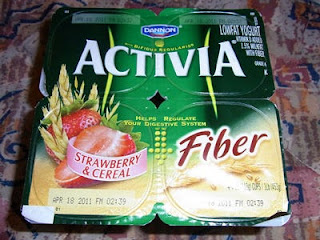asp.aditya259@gmail.com | as086919@ohio.edu
The internet has been one of the most transformative technologies since its advent. In today’s time when online affordances available to anyone with access to the internet are immeasurable, it is hard to distinguish a regular netizen from a communication professional based on their online communication. It is the ethical codes and principles followed by advertisers and PR professionals which ensure, to a certain extent, that the public is served justly, and the audiences are not misled.
The ethical values and codes that the professionals
adhere to make serving the public easier and create transparency. A survey
conducted in August 2017 by the Association of National Advertisers (ANA) found
that 60% of agencies are taking action to address transparency 1. However, generating transparency doesn’t lead to generating trust to a similar degree.
The latest research from the Adweek Media/Harris Poll shows that only one in five Americans trust advertising most of the time and 13% say they never trust it. If truth and honesty are the overriding values in any communications business, why does the research show such abysmal trust percentages? I hypothesize that these results could be a reflection due to the following possibilities.
- The communication professionals are not true (deliberately or unknowingly) to their job (advertisements here)
- The public can’t differentiate between what’s true and what’s not
- Truth doesn’t exist or is unknown
Let us have a look at the conceptualization of the above possibilities through an advertising example- Cleaner X kills 99.9% germs.
Supposing only 1 in 5 (as per the research mentioned above) trusts the above advertisement, communication of the false claim (the cleaner kills 99.9% germs) might dissuade the audiences from building trust in the brand. This false communication might either be deliberate or done without knowing the veracity of the numbers mentioned in the ad.
If the second possibility is considered, the audiences might be in a state where they can’t conceive a cleaner capable of killing 99.9% of the germs. In other words, they can’t make up their mind about whether the advertisement should be trusted or not.
Since a regular person usually doesn’t have access to scientific labs to run the tests and verify the accuracy of the ad, they might choose to consider that the truth doesn’t exist, or it is unknown.
Numerous research results have shown people have a lot of distrust towards advertisers. With that in mind, it would be fair to say that not all ethical codes are being followed. One of the forms of unethical practices that violate public trust is false advertising. Activia ad campaign’s infamous advertising scandal claimed the yogurt had “special bacterial ingredients.” Ads for Dannon's popular Activia brand yogurt landed the
company with a class action settlement of
$45 million in 2010, according to
ABC News.
Several other false-advertising cases, like, Volkswagen’s environment-friendly diesel cars, New Balance’s calorie-burning shoes, etc. have surfaced over the years. Although brands claim they follow ethical guidelines and codes, it would be hard to ascertain the degree to which they do.
References
1. Retrieved from “Principles & Practices for
Advertising Ethics”, http://www.aaf.org/_pdf/aaf%20website%20content/513_ethics/iae_principles_practices.pdf

No comments:
Post a Comment